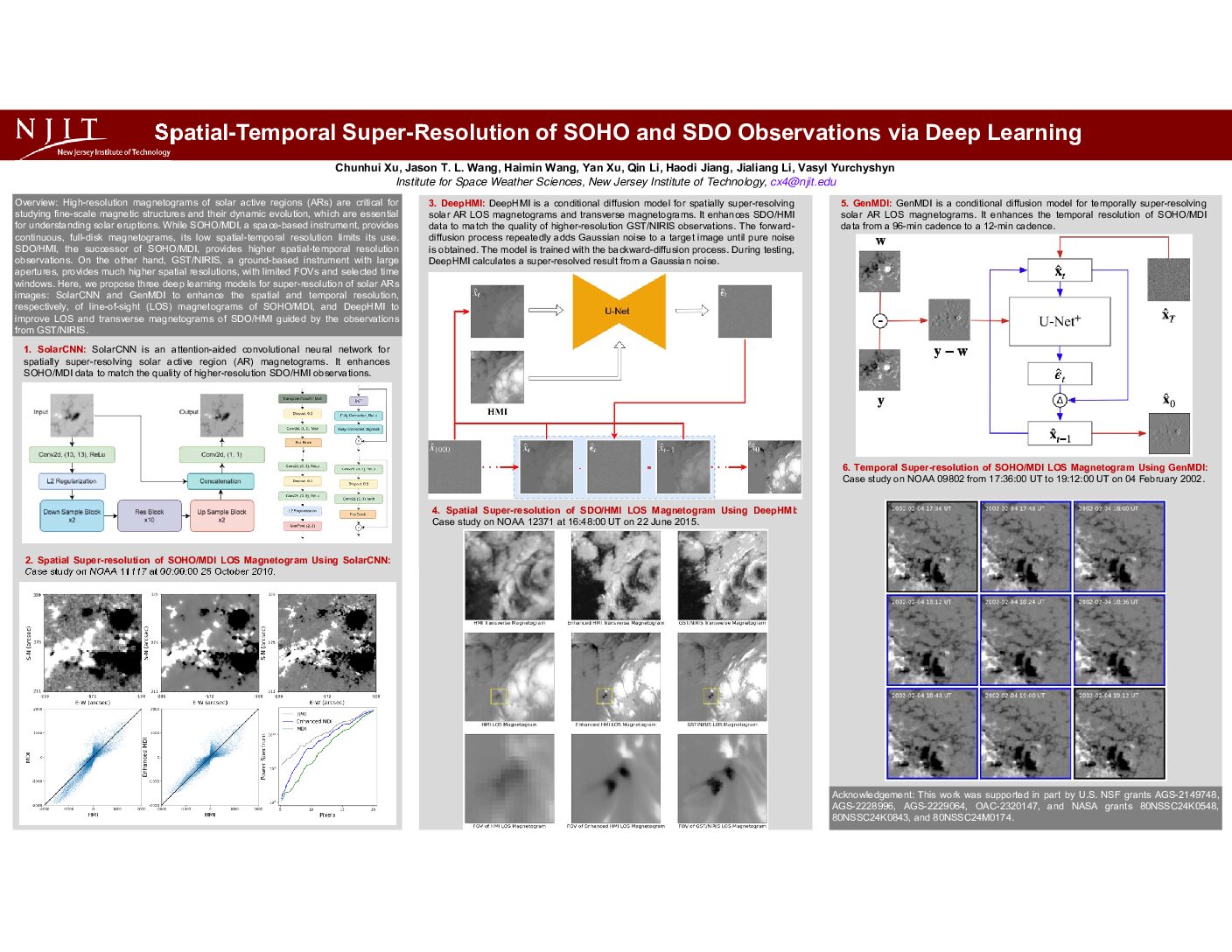Authors: Chunhui Xu (New Jersey Institute of Technology), Jason T. L. Wang (New Jersey Institute of Technology), Haimin Wang (New Jersey Institute of Technology), Yan Xu (New Jersey Institute of Technology), Qin Li (New Jersey Institute of Technology), Haodi Jiang (New Jersey Institute of Technology), Jialiang Li (New Jersey Institute of Technology), Vasyl Yurchyshyn (New Jersey Institute of Technology)
Spatial-Temporal Super-Resolution of SOHO and SDO Observations via Deep Learning
Chunhui Xu, Jason T. L. Wang, Haimin Wang, Yan Xu, Qin Li, Haodi Jiang, Jialiang Li, Vasyl Yurchyshyn
Institute for Space Weather Sciences, New Jersey Institute of Technology
Abstract:
High spatial resolution photospheric magnetograms of solar active regions (ARs) are essential for the studies of sunspot light bridges, magnetic outbreaks, and so on. High temporal resolution magnetograms of solar ARs can reveal more detailed dynamic evolution processes of the magnetic field. Observations collected by the Michelson Doppler Imager (MDI) on board the Solar and Heliospheric Observatory (SOHO) have lower spatial and temporal resolution than those collected by the Helioseismic and Magnetic Imager (HMI) on board the Solar Dynamics Observatory (SDO). Moreover, SDO/HMI has lower spatial resolution than the ground based Near InfraRed Imaging Spectropolarimeter (NIRIS) on the 1.6 m Goode Solar Telescope (GST) at the Big Bear Solar Observatory. Here, we propose three deep learning models for spatial-temporal super-resolution of SOHO and SDO observations: SolarCNN, GenMDI and DeepHMI. SolarCNN and GenMDI are used to enhance the spatial and temporal resolution, respectively, of line-of-sight (LOS) magnetograms of solar ARs collected by SOHO/MDI. DeepHMI is used to enhance the LOS and transverse magnetograms of solar ARs collected by SDO/HMI to the GST/NIRIS resolution. Experimental results demonstrate the good performance of the proposed deep learning models and their superiority over the commonly used interpolation method.


